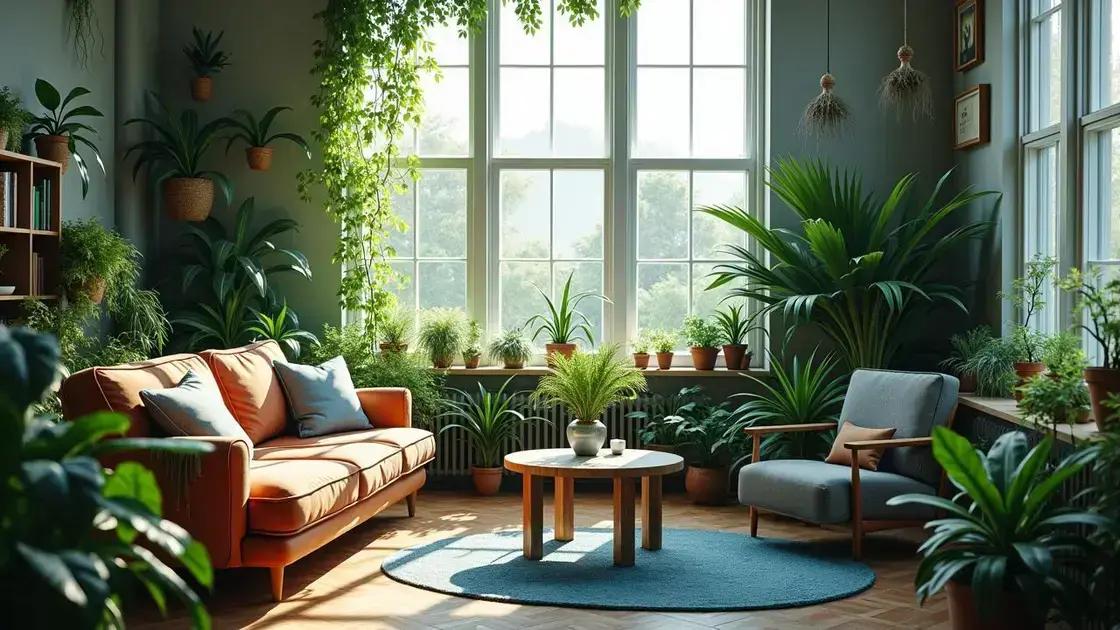How to Care for Air Plants Indoors: 7 Essential Tips for Success
How to care for air plants indoors? If you’re curious about creating a vibrant indoor oasis, these fascinating green companions can add a unique touch. With their unique care requirements and stunning appearance, air plants can elevate any living space. Let’s explore the best ways to nurture these plants for vibrant health.
Table of Contents
ToggleWatering essentials for healthy air plants
Watering essentials for healthy air plants are crucial for their vibrant growth. Air plants thrive on a specific watering schedule that mimics their natural habitat. Understanding these essentials will help you maintain their health and beauty.
Watering frequency
Air plants generally need to be watered once a week, but environmental factors affect this rule. Here are some key points:
- If your home is humid, you may water them every 10 to 14 days.
- In dry climates or during the summer, you might need to soak them 2 to 3 times a week.
Soaking method
The best way to water your air plants is through soaking:
- Submerge the air plants in room temperature water for 20 to 30 minutes.
- After soaking, allow the plants to dry upside down for about an hour to prevent rot.
- Avoid leaving them submerged for too long to avoid overwatering.
Signs of overwatering
Monitor your plants for signs of too much water:
- Brown, mushy leaves indicate rot.
- Yellowing is also a warning sign.
Adjust your watering schedule if you notice any of these symptoms. You can also refer to exploring indoor gardening techniques for additional insights.
Humidity levels
Maintaining adequate humidity is also important:
- Air plants prefer humidity levels between 50% and 70%.
- Use a humidity tray or mist them for an extra boost, especially in dry environments.
In conclusion, understanding the watering essentials for healthy air plants is a vital aspect of indoor gardening. Adjust your techniques based on your home’s specific environment. With the right care, your air plants can flourish and bring beauty to your space.
Optimal lighting conditions for indoor air plants

Optimal lighting conditions for indoor air plants are essential for their growth and vitality. Understanding the right lighting can make all the difference in keeping these unique plants healthy and thriving.
Natural light vs. artificial light
When considering lighting, both natural and artificial light can be beneficial, but they serve different purposes:
- Natural light: Air plants flourish in bright, indirect sunlight. East or west-facing windows are ideal for promoting healthy growth.
- Artificial light: If natural light is insufficient, use full-spectrum LED grow lights to supplement sunlight.
Signs of insufficient light
Monitoring your air plants will help you identify if they receive optimal lighting:
- Brown tips on leaves often signify too much direct sunlight.
- Pale leaves and elongated growth may indicate insufficient light.
Recommended lighting duration
For optimal growth, air plants need a specific amount of light exposure:
- Provide them with 12 to 14 hours of light per day.
- Rotate your plants regularly to ensure all sides receive equal lighting.
Enhancing humidity and light factors
Humidity plays a considerable role in conjunction with light:
- Keep humidity levels between 50-70% for best results.
- Consider integrating a humidity tray to boost moisture during dry seasons.
To further enhance your indoor gardening skills, consider exploring indoor gardening techniques that can complement caring for air plants.
In summary, achieving optimal lighting conditions for indoor air plants is essential. By understanding their requirements, you can create a thriving environment that encourages growth and beauty.
Fertilizing tips to boost air plant growth
Fertilizing tips to boost air plant growth are essential for ensuring these unique plants thrive and flourish indoors. Proper nutrition can significantly enhance their vitality while promoting vibrant leaves and blooms.
Choosing the right fertilizer
When it comes to feeding air plants, selecting the right fertilizer is vital:
- Opt for a balanced liquid fertilizer with an NPK ratio of 10-10-10 or 20-20-20.
- Avoid fertilizers that contain urea, as it can harm air plants.
Application methods
There are various ways to apply fertilizer:
- Dilute the fertilizer in water to create a weak solution.
- Soak your air plants in this solution for about 20-30 minutes.
- Alternatively, use a spray bottle to lightly mist the plants once every 4-6 weeks.
Timing and frequency of feeding
The timing of fertilization is key:
- During the growing season (spring and summer), feed your air plants every 4-6 weeks.
- In fall and winter, reduce fertilization to 1-2 times during the season.
Signs of nutrient deficiency
Watch for signs that indicate your plants may need more nutrients:
- Yellowing leaves can be a sign of nitrogen deficiency.
- Pale or shriveled leaves may indicate a lack of essential nutrients.
For further insights on nurturing your air plants, consider exploring indoor gardening techniques that can help enhance plant care.
By following these fertilizing tips to boost air plant growth, you can ensure a thriving indoor garden filled with beautiful and healthy air plants.
In conclusion
Caring for air plants indoors requires attention to several key factors, including proper watering, optimal lighting, and effective fertilization techniques. By following the tips outlined in this guide, you can create a thriving environment for your air plants, ensuring they remain healthy and vibrant. Don’t forget to frequently monitor their condition and adjust care routines as necessary. For even more helpful advice and tips on enhancing your indoor garden, explore additional resources to cultivate your green thumb further.

